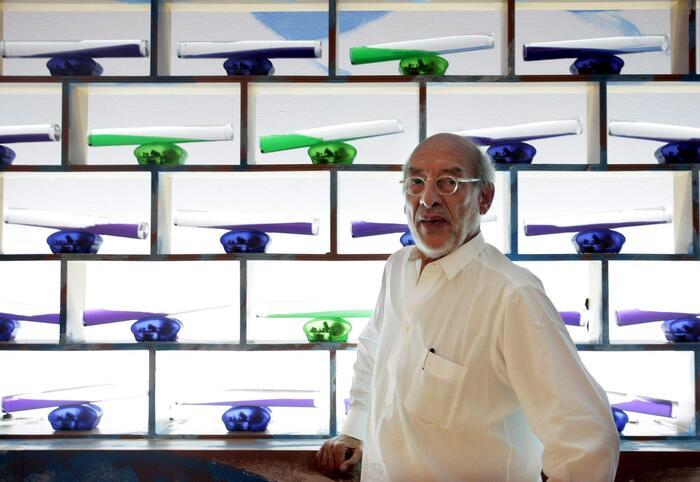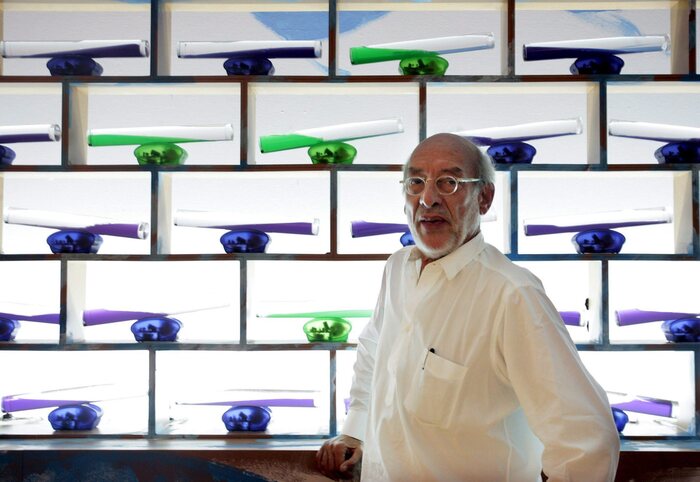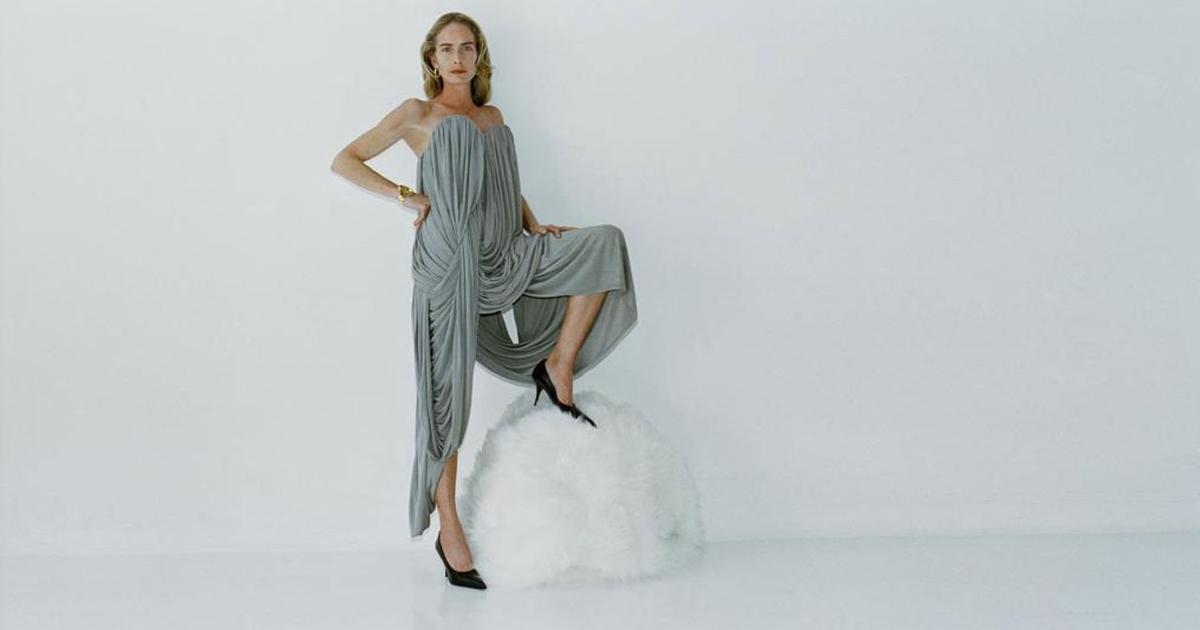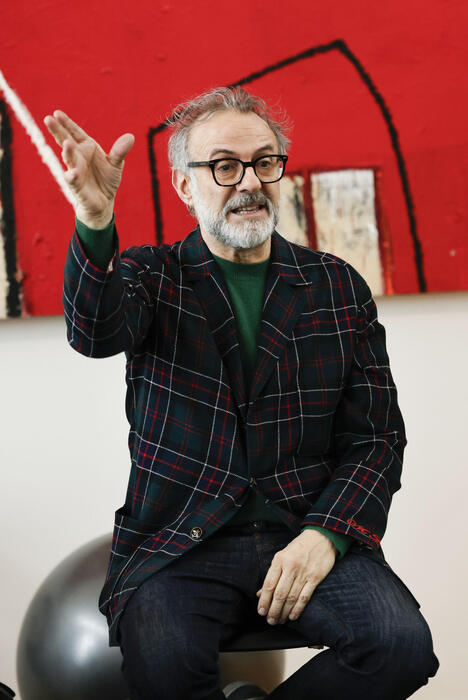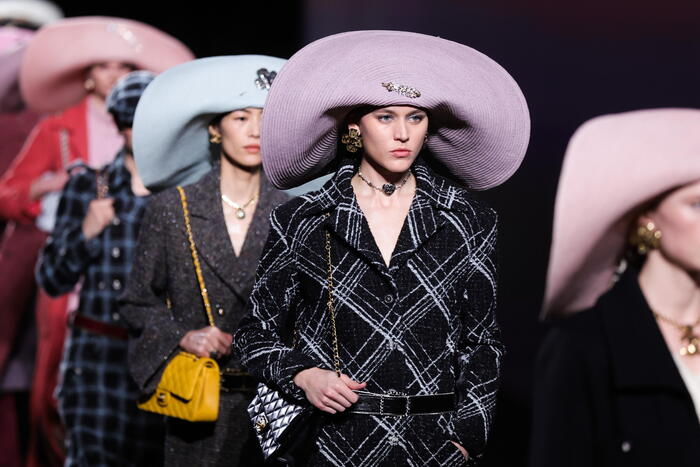It was 11 minutes of battle until Jussi Pylkkänen, president of Christie's auction house, slammed his bribe against his oak lectern and exclaimed: “Sold!”
(“Awarded!”).
The New York room roared as if a war had ended and someone was announcing the armistice.
The applause was directed at the oil
Les femmes d'Alger
(Women of Algiers, Version O,
1955), by Picasso, which had just been sold for 179.3 million dollars (about 185 million euros today).
The highest price at that time – May 2015 – achieved for a work of art at auction (and to this day, the record for a Picasso sold in this way).
But before that, an entire existence had passed.
Very soon in Picasso's life it was too late.
He later became one of the dozens of artists who settled in bohemian Paris at the beginning of the last century looking for attention and finding misery.
The artist from Malaga, at the age of 25, was already on his way to riches.
"His enthusiasm for making money was only tempered by his desire to reject the social conventions that the bourgeoisie attributed to luxury," says Michael Fitzgerald, professor of fine arts at Trinity College in Hartford.
The sales were important because they allowed him to push his work to the limit.
It was just like cubism.
He was there, on the white border of the canvas;
waiting.
'Young Girl with a Basket of Flowers' (1905), photographed at Christie's auction house, London. Photograph by PA Images / Alamy (© Succession Pablo Picasso; VEGAP; Madrid; 2022)
Picasso had great business skills and understood that something similar to the contemporary market was beginning to be created.
In 1902, in the middle of the Blue Period, he painted images—like two young mothers taking care of their children—because they wanted to.
“He lived on Rue de Champollion [in Paris].
He wanted to do something to earn money.
I'm a little embarrassed to admit it, but it was like that”, Picasso will acknowledge.
Even when he had his first major exhibition in the French capital, at the Vollard Gallery, in June 1901, many of his 64 oil paintings, pastels, and drawings—some completed in less than three weeks—proposed Spanish and colorful motifs.
Easy.
He sold 15 pieces.
This was the young Picasso.
An artist capable of painting 1.3 works per day on average between 1907 and 1914. A demiurge.
“He had an immense capacity for work and took enormous risks.
And he quickly intuited the art system ”, summarizes Eugenio Carmona, curator of the exhibition
Picasso 1906: the great transformation,
with which the Reina Sofía Museum will commemorate between November 2023 and March 2024 the 50th anniversary of his death .
However, the construction of the myth requires a dealer.
On July 11, 1908, the legendary German gallery owner Daniel-Henry Kahnweiler opened a space on the Rue de Vignon in Paris.
He opens with Braque, Van Dongen, Derain, Vlaminck.
The first painting you will see —unfinished— by the painter from Malaga is
The Ladies of Avignon
(1907).
It will be 17 years before the dressmaker Jacques Doucet buys it for 25,000 francs.
"Despite inventing cubism, it doesn't sell well," clarifies José Lebrero, artistic director of the Picasso Museum in Malaga.
Does matters!
The genius has in his hands the art of the 20th century.
In 1908 the American press writes about
The Savages of Paris.
The text reproduces
The young ladies of Avignon.
Pablo Picasso, become the owner.
A ceramic piece created in 1960.© Succession Pablo Picasso;
VEGAP;
Madrid;
2022 - © Christie's images ltd.2022
Kahnweiler devises a brilliant strategy.
He creates a network of artist dealers in Germany, Austria, Switzerland, the United Kingdom and the United States.
France is out.
He will never exhibit in the salons of Paris—he abhorred his reactionary proposals—and he barely maintains collectors in the city.
In December 1912 he signs a three-year contract with the painter for incredible figures.
The price of a drawing is 100 francs, the value of 25 paintings (81 × 65 centimeters) starts at 1,000 francs each and 60 canvases (130 × 97 centimeters) cost 3,000 francs.
George Braque, for comparison, earns 75% less.
At the end of the agreement, their prices have tripled, and so have the collectors and their nationalities.
Americans (Stein, Barnes), Russians (Shchukin, Morosov), Germans (Uhde, Rupf, Persl), French (Gasquet)…
Despite everything, Picasso hated dealers and their bargaining and, above all, he hated parting with paintings.
"That hatred is understandable," justifies Enrique Mallen, an expert on the teacher.
“Except for a scrupulous few, most of those willing to take a chance on a young artist were quasi-extortionists taking advantage of their desperation to force prices even lower.”
Picasso will get his revenge soon.
He either confronts them or ignores them.
Mallen remembers that initial contempt.
American art dealer Samuel Kootz flew in 1946 from New York to see Picasso in the hope of buying a painting.
When he arrived, he was still sleeping, so his secretary, Jaume Sabartés, received him.
"Another American?"
"Where the hell did you get it from?"
Here begins the genius market.
Almost 70 years after painting
Version O,
his prices retain the golden touch.
Between 2018 and the middle of this year —according to the Mutual Art platform— it sold 2,323 million dollars (2,267 million euros at current exchange rates) at auction.
The 2018 calendar was the best ($729.3 million), and 2020 the weakest ($242.8 million).
In the midst of a pandemic, few risk for his works.
But during 2021, 5,504 pieces were offered and 3,970 were auctioned off.
72%.
Picasso always returns, and his market comes out unscathed from certain criticisms of his treatment of women.
His second best result ($115 million, in 2018) shows a nude underage prostitute (Linda) holding a basket of flowers,
Fillette à la corbeille fleurie
(1905).
The painting belonged to the writer Gertrude Stein, who complained about her "monkey feet".
"They were different times.
Bohemian environments were impregnated with anarchism and free love was practiced”, defends Enrique Carmona.
The auction accounting of genius is quickly sketched.
His most expensive sculpture is
Tête de femme
(Fernande), from 1908. It was sold by the Metropolitan in May 2022 for 48.4 million dollars (almost 50 million euros).
The unattainably priced etching is
Le repas frugal
(1904).
Picasso recorded it when he was 24 years old.
Although last March he exceeded six million pounds.
And the work on paper
Composition au Minotaure
(1936) seduced a collector during 2014 until he paid 10.3 million pounds (11.7 million euros).
Picasso would have smiled and remembered the blue of poverty.
Another gesture he would draw knowing that one of his great auctions took place in 2021, in Las Vegas, the city of gambling.
Eleven paintings and ceramics exhibited for two decades in the restaurant of the Bellagio hotel were sold for 110 million dollars (more than 113 million euros).
Nor would the genius have liked one of his new collectors, Steven A. Cohen (the hedge fund wizard), who sells the works at the speed of Boeing stock.
'The frugal meal' (1904).© Succession Pablo Picasso;
VEGAP;
Madrid;
2022 - From the digital image © Album
Without wanting it, money has followed Picasso.
Together they have experienced exceptional situations.
The cloth
Bust of a young woman
(1906) seized from the former president of Bankinter Jaime Botín, after the Constitutional Court confirmed that he tried to export it illegally, demonstrates the success of the purchase in 1977 (it is already hanging in the Reina Sofía) and the error of his advisors when locating the address of the painting in Pozuelo de Alarcón (Madrid), where the former banker resides, instead of on his ship flying the English flag.
The State's prohibition —given its importance— was a book.
And taking it out by sea to, according to the indictment, place it in Switzerland was contraband.
"The problem has been that he has not been well informed about the sale or the jurisdictions involved," analyzes Laura Gaona, founder of the Calíope Art Law firm.
The canvas, instead of the image of a girl from the time of Gósol (a town in Lleida where Picasso lived for three months before inventing cubism), is, symbolically,
the polaroid of a smoking gun.
The Administration valued the painting at 26.2 million euros, but outside it would exceed 100 million.
Perhaps it is the last ember of another era.
Technology has changed the meaning of owning a picasso.
The collector Javier Lumbreras treasures two:
Girl with a green beret
(1964) and
Bust of a woman
(1939).
Both paintings measure 65 × 54 centimeters and “were purchased as investments,” he admits.
His destiny is to obtain funds for a cultural project in Arévalo (Ávila).
Girl
is tokenized.
He has created 4,000 tokens (individual shares) that are trading at 1,117 Swiss francs (1,152 euros).
Which values the painting at 4,668,000 euros.
In 10 years the fabric will be sold and the profitability will depend on the tokens that the investor owns.
It is possible to buy picassos without being rich.
Engravings and ceramics are the best options.
A drypoint from 1905 or 1906
(The Saltimbanquis),
with a print run of 250 copies, or a pottery of over 500 can be purchased for around 3,000 euros.
Better prices are found at lesser known auction houses like Hindman, Wright, Westport, Santa Fe or Heritage Auctions.
Picasso produced 33,000 works.
"It seems like a high number, but many are in private collections and museums," explains Keith Gill, an expert at Christie's London.
However, in prints and decorative arts possibilities still arise.
It is as if Picasso had purposely left a door open at the entrance to his mind, his home.
When he bought the Château de Vauvenargues (in the French region of Provence-Alpes-Côte d'Azur) in 1958, he was asked why he felt at home in such a gloomy place.
"I am Spanish and I like sadness," he replied.
He learned from misery that money never heals desolation.
Subscribe to continue reading
read without limits
Keep reading
I'm already a subscriber


